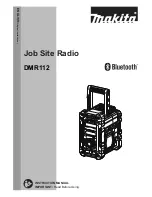
SATELLINE-3AS
User Guide, Version 2.3
18
Description of pins:
·
RD
= R
Receive D
Data. Output of the data received from the radio modem to the DTE.
·
TD
= T
Transmit D
Data. Input of the data to be transmitted from the DTE to the radio modem.
·
CTS
= C
Clear T
To S
Send. See Chapter 5.2.1.
·
CD
= C
Carrier D
Detect. See Chapter 5.2.2.
·
RTS
= R
Request T
To S
Send. See Chapter 5.2.3
·
DTR
= D
Data T
Terminal R
Ready. Terminal in operation. When the DTR-line is connected to a
positive voltage (e.g. to the operating voltage, V
b
), the radio modem is ON, if not, the radio
modem is in the
Standby Mode
.
·
DSR
= D
Data S
Set R
Ready. Indicates that the radio modem is switched ON.
·
RSSI
= R
Received S
Signal S
Strength IIndicator. Indicates the strength of the received signal. Can
be used to approximately determine the received signal strength. See Chapter 3.2.1.
·
MODE
= operational mode. When the MODE-line is connected to ground (GND), the radio
modem enters the
Programming Mode
which is used to change the settings of the radio
modem (i.e. configuration, set-up). If the MODE-line is not connected, the radio modem will
enter the
Data Transfer Mode
, in which data can be transmitted and received. The
Programming Mode
is used only when installing a radio modem and changing the
operational parameters of a network. Normally the radio modem is always in the
Data
Transfer Mode
. See Chapter 4.2.
·
GND
= both the negative pole of the operating voltage and the signal ground.
·
V
b
= positive pole of the operating voltage.
2.2 RS-232 interface
RS-232 standard defines the method of serial data transfer between a computer and its
peripherals. The definition includes both the interface type and signal levels. Most computers
and peripherals contain one or more RS-232 type serial ports. The RS-232 standard uses
transmission lines, in which each single signal line level is referenced, to a common ground
level. RS-232 has been designed to be used in serial transfer of data, in situations where the
distance between communicating equipment is less than 15 m. The otherwise useful RS-232
standard is applied in a multitude of slightly differing ways, (e.g. different pin configurations) and
for this reason different computers and peripherals are not necessarily directly compatible with
each other (see also Chapter 10.2.1 for more information on RS-232 wiring).
















































